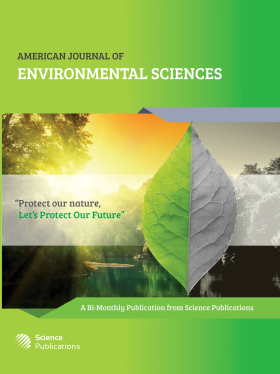Heavy Metals Content and Ecotoxicity of Sediments from the Congo River
- 1 Faculté des Sciences, Université Pédagogique Nationale, Kinshasa, Democratic, Congo
- 2 Faculty of Oil, Gas and Renewable Energies, University of Kinshasa, Kinshasa, Democratic, Congo
- 3 Faculty of Medicine, School of Public Health, University of Kinshasa, Kinshasa XI, Democratic, Congo
- 4 Department of Chemistry, Faculty of Science, University of Kinshasa, 190 Kinshasa XI, Democratic, Congo
- 5 Laboratório de Protecção e Segurança Radiológica, Instituto Superior Técnico, Campus Tecnológico Nuclear, Universidade de Lisboa, 2695-066 Lisboa, Portugal
- 6 Faculté des Sciences, Université Pédagogique Nationale, Kinshasa, Democratic, Congo
- 7 Department F-A, Faculty of Science, Forel for Environmental and Aquatic Sciences and Institute for Environmental Sciences, University of Geneva, Geneva 4, Switzerland
Abstract
This research aimed to quantify the contamination of Congo River sediments by heavy metals and to evaluate their ecotoxicological effects in the municipalities of Maluku, Gombe, and Kinsuka, Kinshasa Province. Metal concentrations in sediments reached 340 mg kg-1 for Cr, 310 mg kg-1 for Cu, 826 mg kg-1 for Zn, 63 mg kg-1 for as, 1.9 mg kg-1 for Cd, 262 mg kg-1 for Pb and 2.9 mg kg-1 for total Hg. Contrasting with this, the metal concentrations in sediments from a control river with minor anthropogenic activities were one to three orders of magnitude lower. The Geoaccumulation Index indicated that sediment samples from the Congo River were “heavily polluted” to “extremely polluted” by Cu, Zn, As, Cd, Pb, and Hg, and the Enrichment Factor pointed out from “severe” to extremely “severe” enrichment of sediments in Cu, Zn, As, Cd, Pb and Hg. The high metal concentrations in the Congo River exceeded the recommended limits set up in the Sediment Quality Guidelines for the protection of aquatic life. Experimental toxicity tests carried out with ostracods (Heterocypris incongruens) exposed to sediments from the Congo River resulted in mortality percentages ranging from 15.9-72.6% for Maluku sediments and mortality percentages generally at 100% for sediments from Gombe and Kinsuka areas. Positive and also negative Spearman order correlation coefficients were observed between the analyzed metals, suggesting multiple sources and different environmental transport pathways for those metallic elements in the Congo River sediments. Globally, the results showed that sediments from the Congo River are heavily polluted by metals, representing a major toxicological risk to the aquatic ecosystem and a threat to public health through the consumption of contaminated water.
DOI: https://doi.org/10.3844/ajessp.2024.64.77

- 3,178 Views
- 1,491 Downloads
- 1 Citations
Download
Keywords
- Sediment Pollution
- Heavy Metals
- Ecotoxicological Risk
- Toxicity Tests
- Ostracods
